Abstract
Tully, Joseph G. (Walter Reed Army Institute of Research, Washington, D.C.) and Julius A. Currie. Vi-negative strains of Salmonella typhosa: attempts to induce W-V reversion and the use of non-Vi strains in evaluating typhoid vaccines. J. Bacteriol. 84:747–753. 1962.—Repeated attempts have been made to detect reversion of several W-form Salmonella typhosa strains to Vi antigen-containing cultures. Passage of the O-901, H-901, and Ty2W cultures through various mouse strains did not result in the recovery of V-form typhoid bacilli. Rabbits immunized repeatedly with non-Vi strains of typhoid bacilli, or with W cultures successively passed through mice, did not respond with Vi antibody formation. Attempts also were made to detect reversion of non-Vi strains passed in broth and plate cultures to which heat-killed Vi antigen-containing strains had been added. No evidence was obtained that the selection of Vi-containing cultures had been enhanced. The non-Vi typhoid strains employed in this study thus appeared to be stable W-form cultures. Viable-cell vaccines and acetone-killed and dried (AKD) vaccines of V- and W-form S. typhosa were compared in active mouse protection tests against intraperitoneal and intracerebral challenges with V- and W-form typhoid strains. Only Vi-containing cultures effectively protected mice against virulent V-form challenges, regardless of the route utilized. Greater quantities of both viable-cell and AKD vaccines prepared from non-Vi strains were required for protection against V- as well as W-form S. typhosa challenges.
Full text
PDF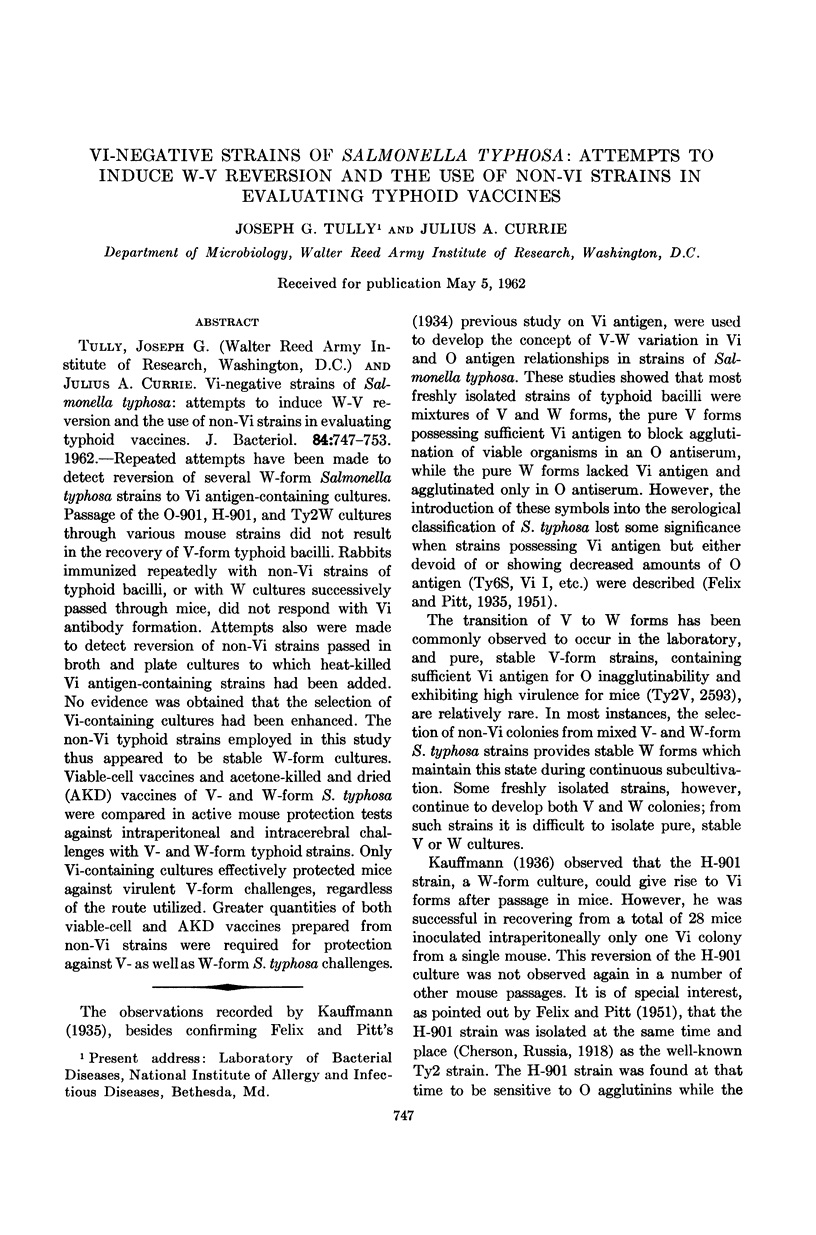
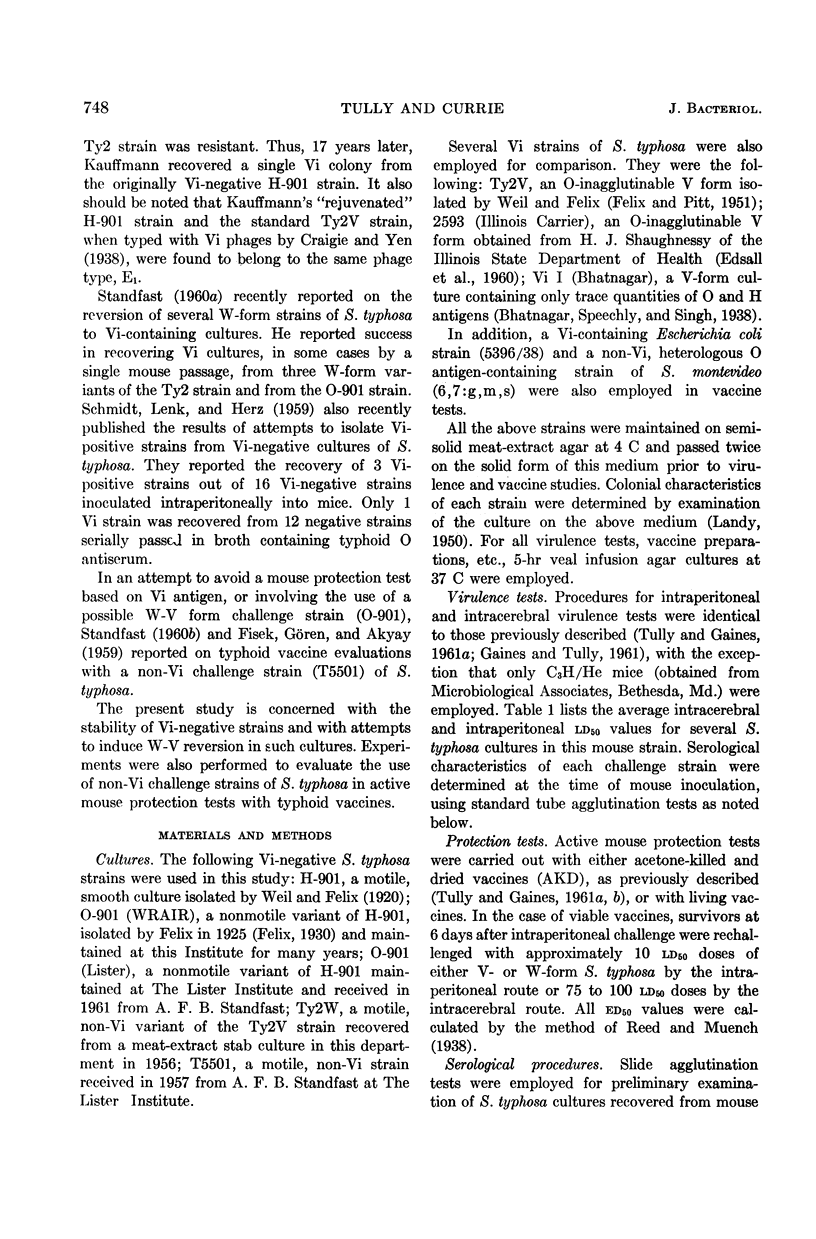

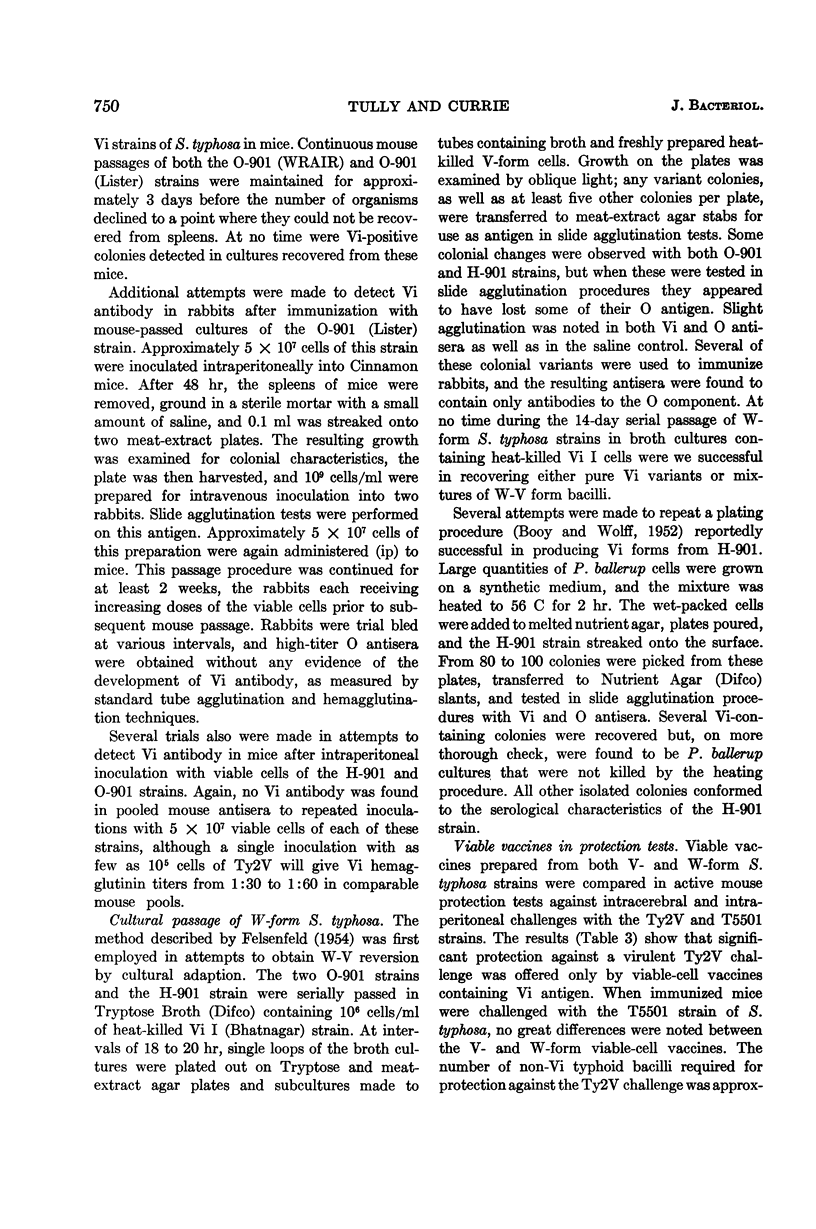
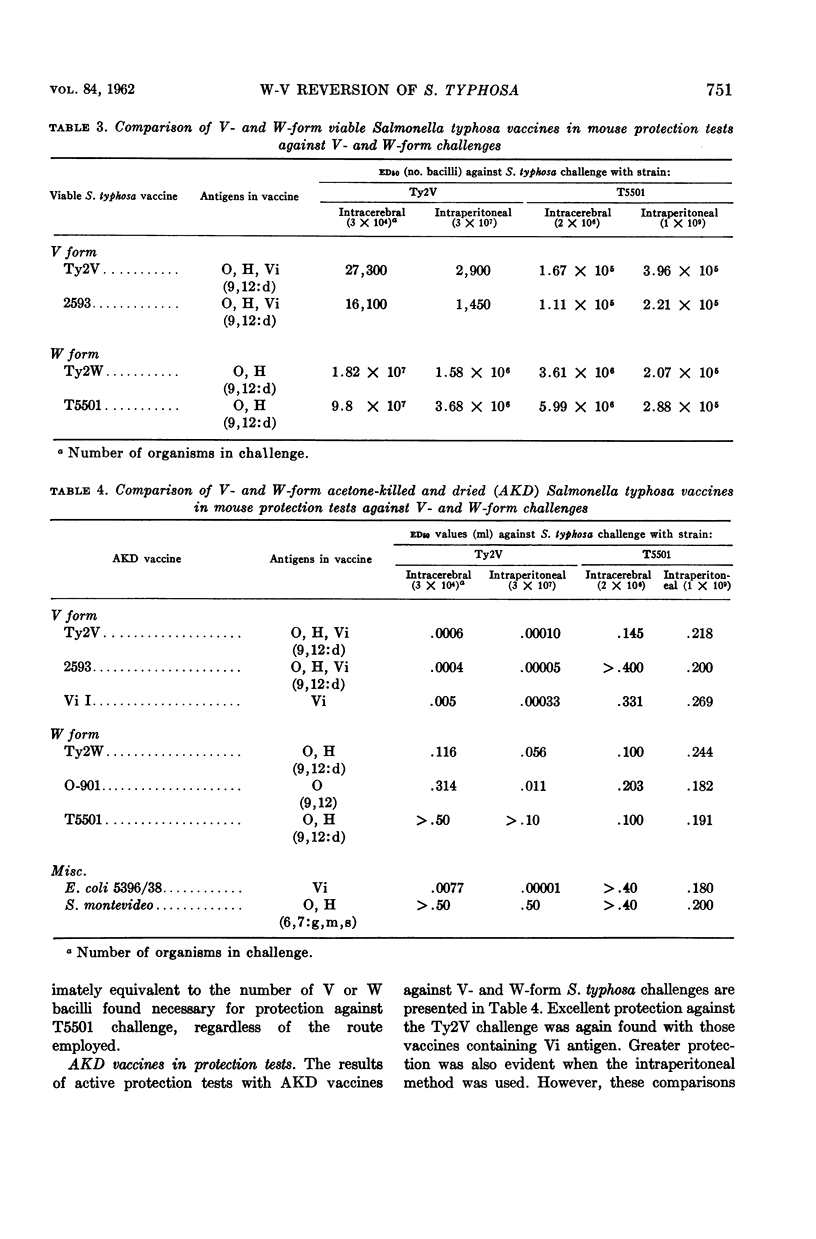
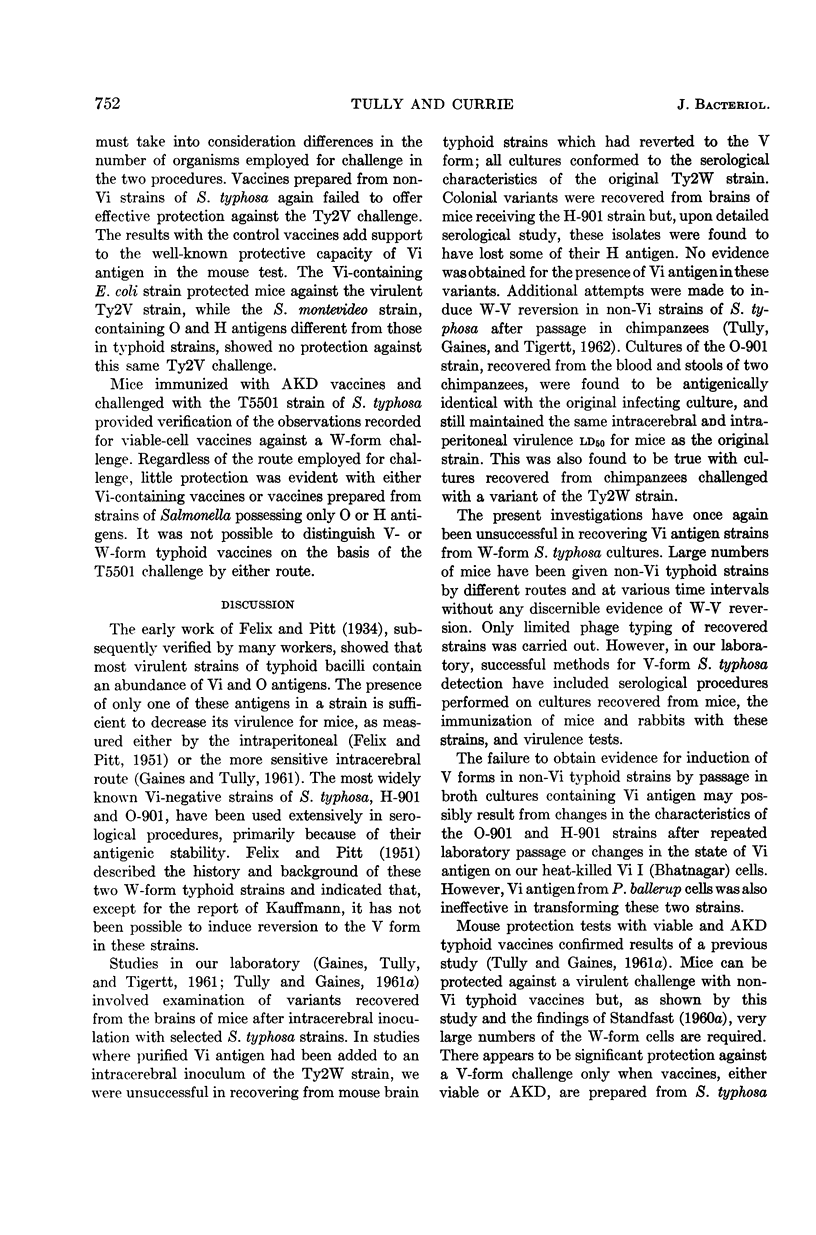
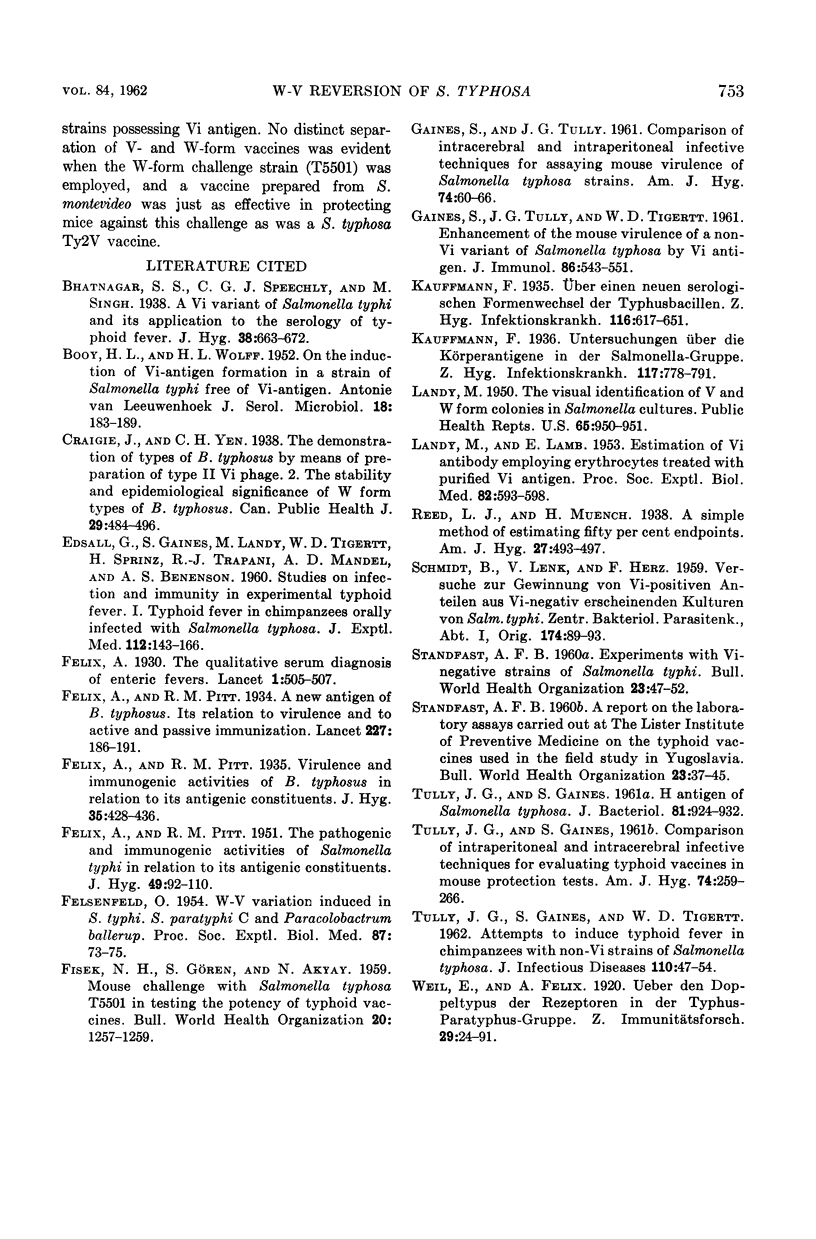
Selected References
These references are in PubMed. This may not be the complete list of references from this article.
- BOOY H. L., WOLFF H. L. On the induction of vi-antigen formation in a strain of salmonella typhi free of vi-antigen. Antonie Van Leeuwenhoek. 1952;18(3):183–189. doi: 10.1007/BF02538606. [DOI] [PubMed] [Google Scholar]
- EDSALL G., GAINES S., LANDY M., TIGERTT W. D., SPRINZ H., TRAPANI R. J., MANDEL A. D., BENENSON A. S. Studies on infection and immunity in experimental typhoid fever. I. Typhoid fever in chimpanzees orally infected with Salmonella typhosa. J Exp Med. 1960 Jul 1;112:143–166. doi: 10.1084/jem.112.1.143. [DOI] [PMC free article] [PubMed] [Google Scholar]
- FELSENFELD O. W-V Variation induced in S-typhi, S. paratyphi C and Paracolobactrum ballerup. Proc Soc Exp Biol Med. 1954 Oct;87(1):73–75. doi: 10.3181/00379727-87-21289. [DOI] [PubMed] [Google Scholar]
- FISEK N. H., GOREN S., AKYAY N. Mouse challenge with Salmonella typhosa T 5501 in testing the potency of typhoid vaccines. Bull World Health Organ. 1959;20:1257–1259. [PMC free article] [PubMed] [Google Scholar]
- GAINES S., TULLY J. G. Comparison of intracerebral and intraperitoneal infective techniques for assaying mouse virulence of Salmonella typhosa strains. Am J Hyg. 1961 Jul;74:60–66. doi: 10.1093/oxfordjournals.aje.a120201. [DOI] [PubMed] [Google Scholar]
- GAINES S., TULLY J. G., TIGERTT W. D. Enhancement of the mouse virulence of a non-Vi variant of Salmonella typhosa by Vi antigen. J Immunol. 1961 May;86:543–551. [PubMed] [Google Scholar]
- LANDY M., LAMB E. Estimation of Vi antibody employing erythrocytes treated with purified Vi antigen. Proc Soc Exp Biol Med. 1953 Apr;82(4):593–598. doi: 10.3181/00379727-82-20188. [DOI] [PubMed] [Google Scholar]
- LANDY M. The visual identification of V and W form colonies in Salmonella cultures. Public Health Rep. 1950 Jul 28;65(30):950–951. [PubMed] [Google Scholar]
- SCHMIDT B., LENK V., HERZ F. Versuche zur Gewinnung von Vi-positiven Anteilen aus Vi-negativ erscheinenden Kulturen von Salm. typhi. Zentralbl Bakteriol Orig. 1959 Jan;174(1-2):89–93. [PubMed] [Google Scholar]
- STANDFAST A. F. A report on the laboratory assays carried out at the Lister Institute of Preventive Medicine on the typhoid vaccines used in the field study in Yugoslavia. Bull World Health Organ. 1960;23:37–45. [PMC free article] [PubMed] [Google Scholar]
- STANDFAST A. F. Experiments with Vi-negative strains of Salmonella typhi. Bull World Health Organ. 1960;23:47–52. [PMC free article] [PubMed] [Google Scholar]
- TULLY J. G., GAINES S. Comparison of intraperitoneal and intracerebral infective techniques for evaluating typhoid vaccines in mouse protection tests. Am J Hyg. 1961 Nov;74:259–266. doi: 10.1093/oxfordjournals.aje.a120218. [DOI] [PubMed] [Google Scholar]
- TULLY J. G., GAINES S. H antigen of Salmonella typhosa. J Bacteriol. 1961 Jun;81:924–932. doi: 10.1128/jb.81.6.924-932.1961. [DOI] [PMC free article] [PubMed] [Google Scholar]
- TULLY J. G., GAINES S., TIGERTT W. D. Attempts to induce typhoid fever in chimpanzees with non-VI strains of Salmonella typhosa. J Infect Dis. 1962 Jan-Feb;110:47–54. doi: 10.1093/infdis/110.1.47. [DOI] [PubMed] [Google Scholar]


